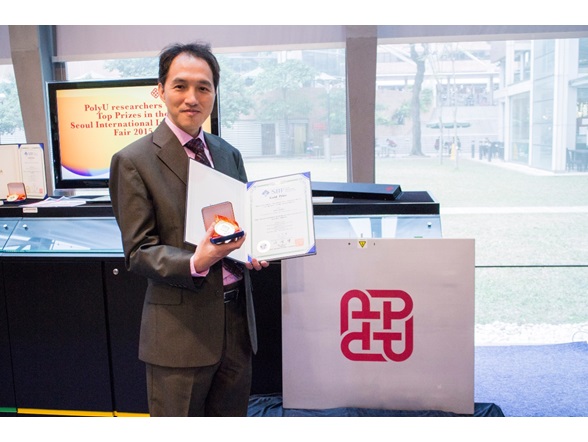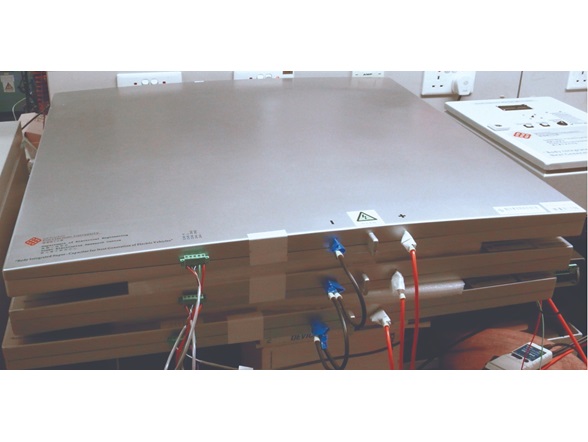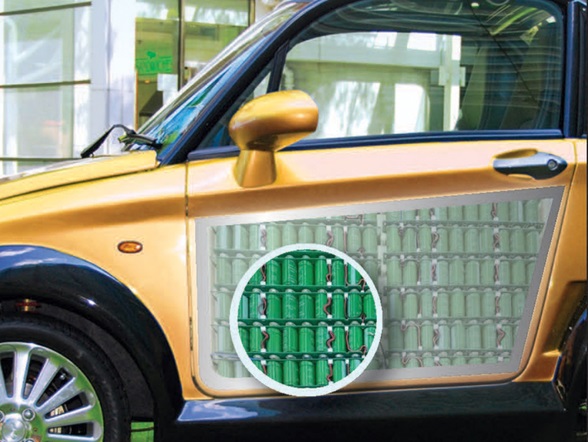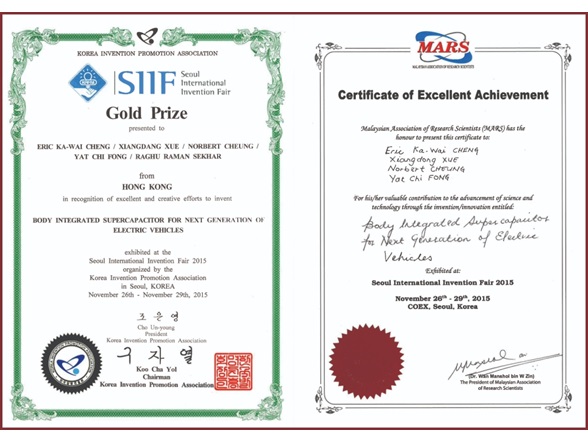Global climate change and greenhouse gases are major environmental concerns these days. No wonder electric vehicles with zero carbon emission have earned commendations from clean energy advocates around the world. However, many potential electric car owners are discouraged by the long charging time and the limited range. How about a new energy storage system that charges in a few minutes and provides enough electricity for a car to travel from Central to Taipo? Prof. Eric Ka-wai Cheng, Department of Electrical Engineering, led a research team in developing a slim supercapacitor module that fits almost anywhere in the auto body. Not only does it charges 20 times faster than lithium ion battery, it also lasts longer and does the ecosystem less harm.
Supercapacitor: an alternative to battery
Lithium ion battery is made with lithium - a limited and exhaustible resource. In 2011, the global lithium resource is estimated to be about 39 million tonnes1. With the widespread use of lithium rechargeable batteries in consumer electronics, all lithium will one day be used up. “When lithium becomes less available in future, the price will go up so that it makes sense to look for alternatives. Supercapacitor is one of them,” said Prof. Cheng.
First things first, supercapacitor and lithium ion battery work very differently. Lithium ion battery stores energy electrochemically. In the discharge process, chemical reactions release electricity. When the battery is charged, the reactions are reversed. The repeated charge-discharge cycles can degrade the chemicals in the battery. That’s why rechargeable batteries tend to lose their power to hold energy over time. “Typically, lithium ion battery can survive about 5,000 charge-discharge cycles. At the end of their lifecycle, recycling is complicated and costly. On the other hand, supercapacitor stores energy electrostatically and it can be charged and discharged for over a million times without losing energy storage capacity. It’s not exaggerating to say that a supercapacitor lasts much longer than the car it’s in. In fact, it can be easily re-installed and re-used in other vehicles time and time again,” explained Prof. Cheng.
In terms of environmental impact, heavy metals such as cobalt and nickel are used in lithium ion batteries, so that their disposal could be harmful to the environment. Supercapacitors, on the other hand, do not contain any heavy metal, alkaline or poisonous compound and can be disposed of relatively safely.
Short charging time and slim design
Another issue that annoys all electric car users as much as all smartphone users is the long charging time. Prof. Cheng said, “Charging lithium ion battery involves chemical reactions that take time. Right now, most electric cars take six to eight hours or even longer to charge from a 220V household mains, and take 2 hours to charge from a medium fast charger. So-called "superchargers" can shorten the charging time to one hour, but it takes toll on the battery life. On the contrary, supercapacitors can be fully charged in three to five minutes. With three to four fully charged supercapacitor modules, an electric car can go 30 km on the road. That’s roughly the distance between Taipo and Central. The short charging time is particularly useful to vehicles that need to stop periodically, such as buses. Whenever a bus reaches a bus stop, it can be recharged within minutes before heading out again. In future, wireless charging will further streamline and simplify the process.”
Yet, the biggest competitive edge of Prof. Cheng’s supercapacitor modules lies in its compact form factor. Each module measures 0.5 square metre, but only 4 cm thick. It can even be made to follow the curvy contour of any automobile. “The supercapacitor module literally fits anywhere on the auto body – the roof, the trunk lid and even the doors. That saves much space and makes room for more spacious interior in compact cars.”
In November 2015, the body-integrated supercapacitor module won a gold prize and a special merit award at the Seoul International Invention Fair 2015.






